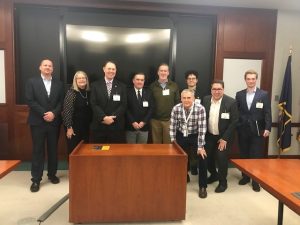Tapping Québec for FDIs in Partnership with GlobalFoundries
GlobalFoundries offers both space and an array of amenities for Québec manufacturing companies seeking a U.S. footprint. To capitalize on this market opportunity, the Vermont Chamber, the Vermont Agency of Commerce, GBIC, and CIDEP (Vermont’s foreign trade representative firm in Montréal) are partnering with GlobalFoundries on tenant recruitment efforts to grow Vermont’s $3 billion dollar manufacturing industry. This work supports of the Governor’s economic development priorities to strengthen our ties with Québec and transform Vermont into a Supply Chain Hub. Recruitment of Québec companies in the aerospace and defense sectors also strengthens cross-border commerce and the Vermont Chamber’s work to build the Vermont – Québec Aerospace Trade Corridor.

SHARE THIS ARTICLE
RECENT NEWS



